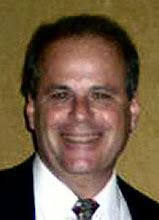For those of you who have at least a passing interest in the history of the Yiddish theatre, this next article may delight you--and at least educate you a bit.
For those of you who aren't interested, it still will be worthwhile to read this article because it paints a picture of what our parents or grandparents might have experienced, attending the performance of a Yiddish play after a long day's work.
Remember that in many of the towns in which our family members lived in Europe before World War II (and even World War I), Yiddish plays were frequently performed. Perhaps these Yiddish plays performed, in their native tongue where they now lived, served to remind them of their former home--their lives, their community--albeit bittersweetly.
In this New-York Daily Tribune article of January 1900, you can learn a bit about how a Yiddish theatre was generally run, as well as its appeal, especially to blue-collar Jewish families.
The article begins by talking about the unionization of Yiddish actors and then talks about the goings-on in the Yiddish theatre and those who attend the performances. Remember now that in 1900, Yiddish theatre was very popular (at least among Jews), with bona fide stars such as Boris Thomashefsky and Bertha Kalish.
The article says in part:
"To gain a correct idea of the Yiddish theatre one must see it, and that it may be thoroughly appreciated [by] other senses than that of sight must be drawn upon. The crowds in the lobby resemble those which are seen in the clothing district when a strike is on, and the air is thick with cigarette smoke. Inside, men and women are talking and visiting and paying little attention to the orchestra. Boys with trays of candy, cakes, fruit and "soft drinks" do a paying business, and sell their wares in the body of the house. The opening lines of the actors are usually lost, except to those people who sit far in front, and demands for silence come from all parts of the auditorium. Sometimes these are in the form of the hissing "Pst! pst! which one hears in all European theatres, and sometimes the more imperative "Ruhig," "'Smaul halten!" or "Still!" are heard. Then comes the play, and close attention on the part of the audience, frequent applause and boisterous laughter and sniffles are sure to reward the efforts of the actors."
The article can be found by clicking at www.museumoffamilyhistory.com/yt-bs-nydt-01.htm.
Subscribe to:
Post Comments (Atom)




No comments:
Post a Comment